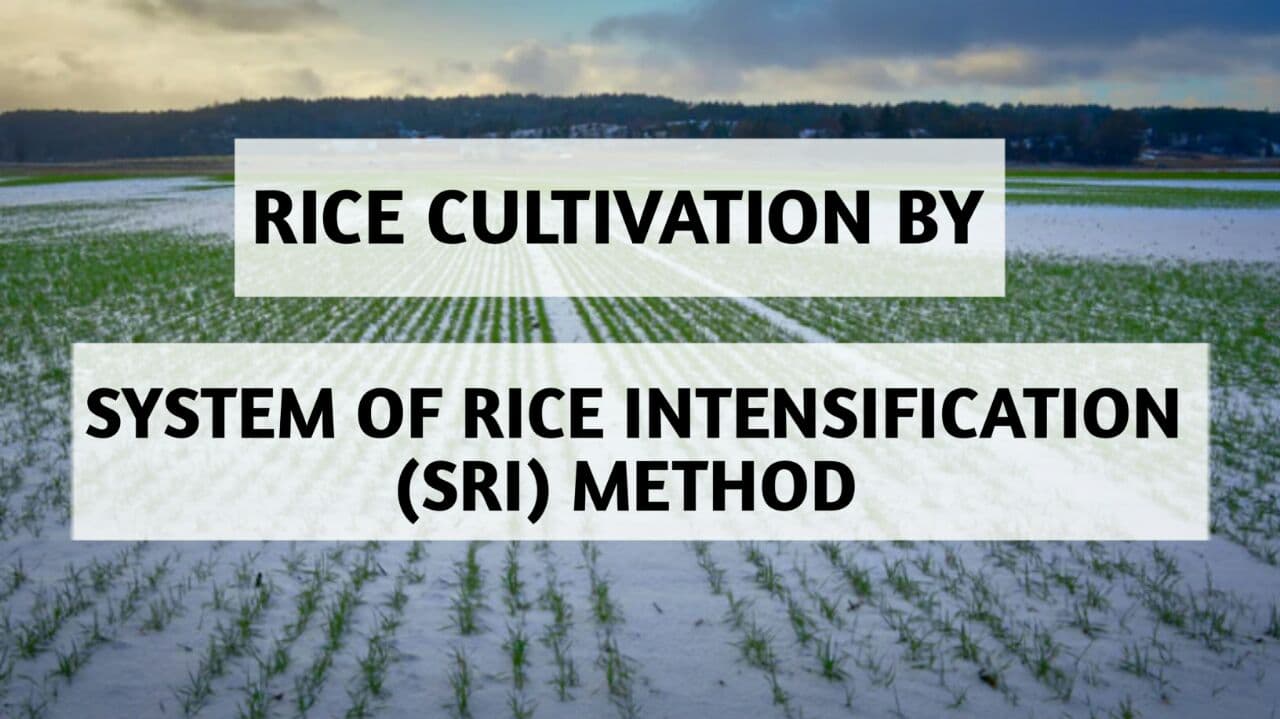SRI method of Rice cultivation
SRI method of Rice cultivation
WHAT IS SRI ( SYSTEM OF RICE INTENSIFICATION) –
System of Rice Intensification (SRI) method first used in Madagascar by Fr Henri de Laulanie, a Jesuit Priest in 1961. But, it is Dr. Norman Uphoff from Cornell International Institute for Food and Agriculture, USA, who had brought this method to the notice of outside world in the late 1990s. Today SRI method is being adopted in many states in India and the response from farmers has been very satisfied seeing the benefits of the method.
SRI is a combination of many practices like changes in nursery management, time of transplanting, water and weed management. Its different way of cultivating rice crop. it just emphasizes altering of certain agronomic practices of the conventional way of rice cultivation. All these new practices are together known as System of Rice Intensification (SRI).
SRI a system of production with four main components –
1. Soil fertility management
2. Planting method
3. Weed control
4. Water (irrigation) management.
Several field practices have been developed around these components.
NURSERY MAKING PROCESS –
Seed rate – 2 to 2.5 kg per acre
Favorable time for cultivation – 25 June to 10 July
First irrigate and plough the field, add 10 kg of cowdung manure and vermicompost 15 Kg then mix them well in the soil. Prepare a seedbed of 4 feet wide, 15 feet long, 6 inches high. Keep the distance form bed to bed is 1 feet.
Treat the seed with a salt solution before sowing. Put all the seeds in a salt solution, remove the seeds that float above the water and throw them away, the seeds immersed in the clap are healthy and suitable for sowing.
Remove the seeds from salt water and wash the seeds thoroughly so that the seeds do not remain salt. Then soak the seeds in clean water for 8 hours.
Treat the seed at the rate of 2 gm bavistin/kg seed and cover it for 15 hours so that the seed germinates well to sow.
Now sprinkle the seeds on the seedbed and sow it, cover the splattered seeds with the help of rotten dung manure. Then cover the seedbed with the help of stubbles.
Give water on time to time. The seedling will be ready in 8 to 10 days for sowing in mainland.
SOWING IN THE MAINLAND –
● Plough the mainland during summer to economize the water requirement for initial preparation of land.
● Flood the field 1 or 2 days before ploughing and allow water to soak in. Keep the surface of the field covered with water.
● Keep water to a depth of 2.5cm at the time of puddling.
● Good leveling (laser leveling) of the main field is essential in SRI. Field drainage is an important component in SRI.
● Keep the distance of the plant from the plant to 25×25 and also keep the distance from row to row 25 × 25.
● Use 25 kg/acer urea , 25 kg/acer potash and 37 kg/Acer DAP during field preparation.
● Use 2.5 kg urea 25 to 30 days after planting.
● Use 1.25 kg of urea 60 to 65 days after planting.
WEED MANAGEMENT –
In this method their is less weed problem. Clean weed with rotary weeder or with the help of hand 12 to 15 days after sowing. Using weeder is of primary importance in SRI. Use simple rotary weeder between crop rows in both the directions starting from 10 days after planting.
BENEFIT OF SRI METHOD –
1. Saving in seed requirement
2. Reduction in nursery area
3. Increased tillering
4. Water saving
5. Less lodging
6. Improved grain filling
7. Reduced of chemical fertilizer
8. Increase grain yield
YEILD –
The yield in this method is expected to be 30 to 40 quintals per acer.


